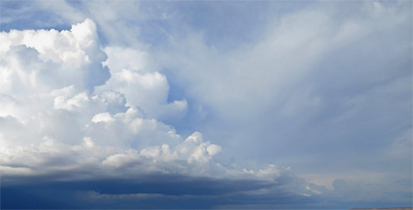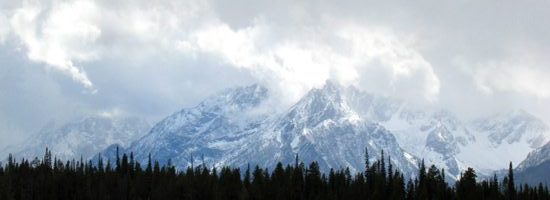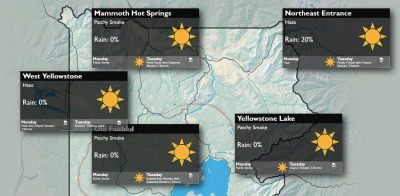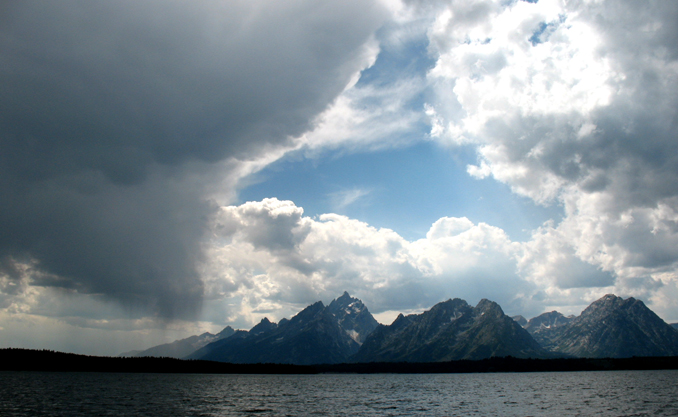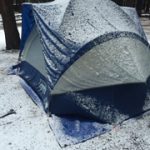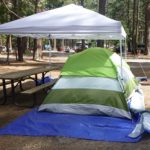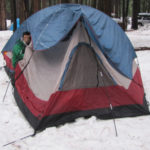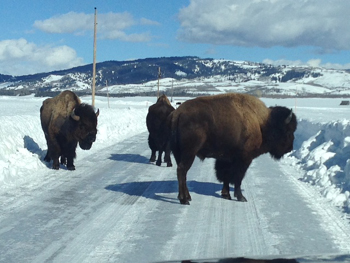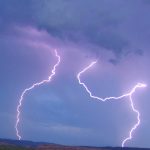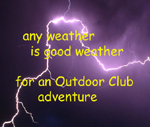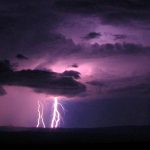This is info for the De Anza College Outdoor Club trips to Grand Teton National Park, Wyoming. The main trip information page is at Grand Tetons . The trip pages index is at: Grand Tetons trip pages index

Watch a Grand Teton National Park summer weather video:
http://www.nps.gov/grte/photosmultimedia/tp.htm
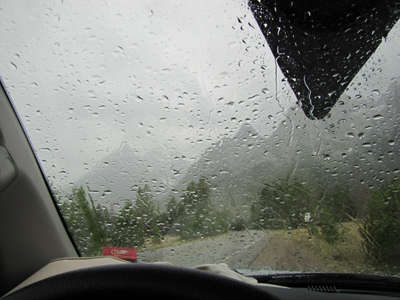
National Park Service stats (temperatures and precipitation by month) for Moose, Wyoming
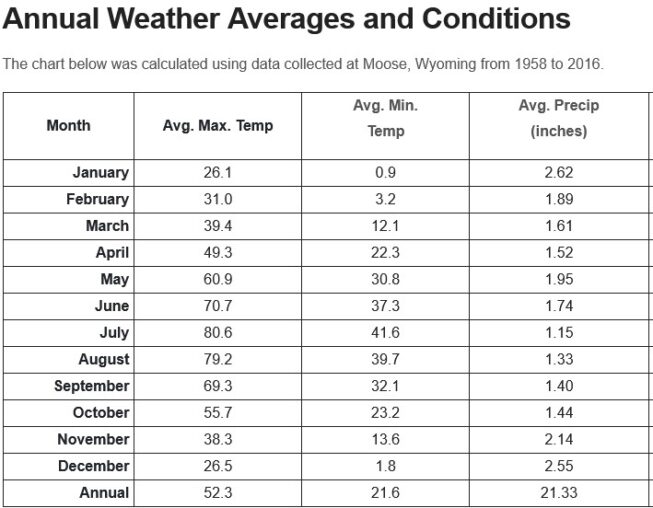
A Jackson Hole weather report said; “The last week or so in July is typically the hottest days of the year in Jackson, with an average high temperature of 83 degrees and an average low of 43 degrees.”
Aug. 11 average high temp 78/ average low temp 44,
Aug. 21 average high temp 76/ average low temp 43
in the lower elevations of the park, at least 5 degrees colder on the upper elevation trails.
Probability of precipitation: Aug. 11 16%, Aug. 21 15%
There is usually a big temp difference at different altitudes. One forecast had highs of 75 degrees in the valley at 6,000 feet elevation, 68 degrees at 8,000 feet and 60 degrees at 10,000 feet. Another forecast had 68 degrees in the valley at 6,000 feet, 61 degrees at 8,000 feet and 53 degrees at 10,000 feet.
Overnight lows can be 48 degrees in the valley at 6,000 feet elevation, 45 degrees at 8,000 feet and 39 degrees at 10,000 feet. Another forecast had 47 degrees in the valley at 6,000 feet, 41 degrees at 8,000 feet and 32 degrees at 10,000 feet.
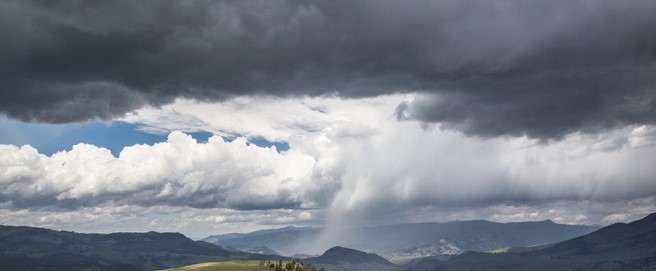
Hiking trails:
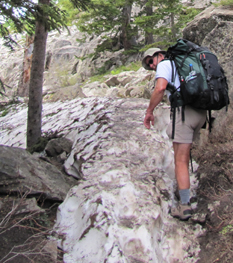
The park service says: Grand Teton/Jackson Hole “Valley trails are often snow covered until late May.” “Snow melts gradually, leaving valley trails by mid-June, canyon trails by mid-July.” “Many mountain passes remain snow covered throughout most of the summer and an ice axe, and the ability to use it, may be recommended to ensure safe travel… Consider bringing an ice axe through mid-july and know how to use it to self-arrest and self-belay on snow. Snowfield crossings can be extremely hazardous and are the source of serious accidents in the Tetons.”
Most of our club trips are in the late summer / early fall.
Days are usually warm, but not hot, nights and early mornings are cool – cold.
We’ve also had lots of late summer / early fall days sunny enough for swimming in a lake if you are intrepid (or if you wear a couple of pairs of jammers or wear a springsuit size wetsuit or, okay, your triathlon wetsuit).
Below, Eric Marxmiller, Michael Gregg, Alan Ahlstrand, Mouzhan Yousefi, Duong Nguyen and Raquel Garza:

and when it is clear: view of the Milky Way through a tent door:
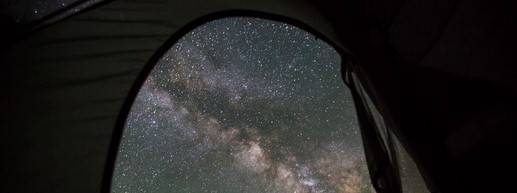
The National Weather Service warns:
” Myth: If it’s not raining or there aren’t clouds overhead, you’re safe from lightning.
Fact: Lightning often strikes more than three miles from the center of the thunderstorm,
far outside the rain or thunderstorm cloud.
“Bolts from the blue” can strike 10-15 miles from the thunderstorm.
Afternoon thundershowers are common in the summer and into fall. During a thunderstorm, don’t take a shower or use a sink, including washing dishes. Don’t swim. Don’t talk on a land line phone. Don’t use your I pod. Don’t get zapped! People have died inside buildings during thunderstorms. Please read Thunderstorm and lightning safety
Here, a multi-mile-wide rainstorm and potential thunderstorm cloud over Jackson lake
as seen from Hanging Canyon trail:
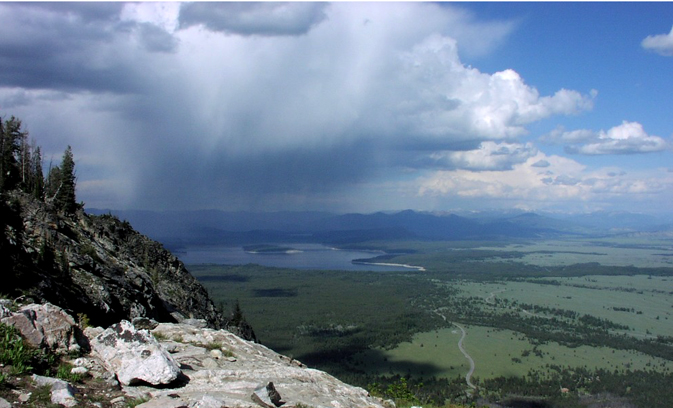
My 1965 copy of A Climber’s Guide to the Teton Range warns “The Tetons are big mountains, big enough to make their own weather, to hide some of the early signs of changing weather… very severe storms can come up quickly. Be equipped for them – this includes reserve food and warm clothing… The one regularity of Teton weather is that the storms almost always come from the southwest. This characteristic means that there is usually very little warning of an approaching storm for climbers on the north and northeast sides of the peaks. It should be kept in mind that these storms can sometimes be quite severe; the driving sleet or snow can convert an ordinary climb into a fight for life.”
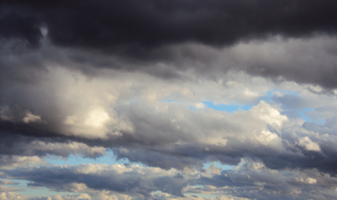
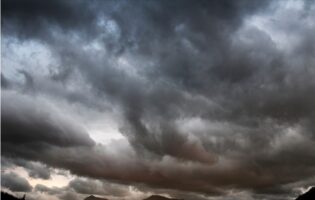
When it rains in the flats it may snow up near the peaks; at least one period of interesting weather with snowfall at the higher elevations occurs in late August every year. Cold early mornings and overnights could bring a few snow flakes to lower elevations even in August, the warmest month. The park warns: “Low temperatures at the high elevations may be at or below freezing at any time of the year.”
Thunderstorms sometimes have hail. You may have heard that Wyoming, Nebraska, and Colorado, usually have the most hailstorms and the area where the three states meet, “hail alley,” has not only the most hail, but the most damaging hail.
Hail Alley, Wyoming is hundreds of miles away from Grand Teton.
In general, hail on our late summer trips has been rare and small.
We watch the weather reports closely and often track thunderstorms as they approach us. One day heavy rain and / or potentially large-sized hail, the size that can crack a windshield, was forecast, so we put two sleeping pads on the windshield under the wipers with a couple of straps tied across and through the shut car doors (the wind was coming up fast as we installed this.)
The hail did not materialize.
One year we had a light dusting of snow and tiny hail in the lower elevation where we camp, (didn’t need chains for the cars so far but we have always brought them, even for the four wheel drive vehicles with snow tires).
For our college trips, you need to agree that you will not ride a motorcycle to / on the trip because you are not safe during lightning (the tires and/or your helmet will not protect you).
If you intend to drive a convertible and it has an electric power top, be sure you know how to put the top up manually in case the push-button function stops working. Rain storms can come in quickly and heavily. You should have alternate ways to get around if lightning is forecast, because
you are not safe during lightning in a convertible.
“The only safe place is inside a substantial building or hard-topped vehicle.”
The local weather report almost always predicts at least a slight chance, or more likely a 20% chance of a thunderstorm, even if none show themselves to us. A report of possible “isolated showers and thunderstorms” also almost always says that “some storms could produce gusty winds” or “some storms could produce small hail and gusty winds.”
In September 2000 we had some thunderstorms and occasionally long bouts of rain. (We kayak/canoe in the rain and wind, but not during thunderstorms.)
If you have been putting up with windshield wipers that are squeaky,
have squeegee rubber edges that are cracked or torn,
are worn enough that they create streaks when they don’t really contact all of the windshield as they wipe, you might want new wiper blades. Below, brand new wiper blades keeping up with heavy rain:
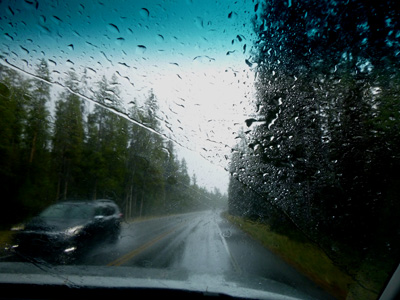
Thunderstorms can have 0.40 inches of rain in less than an hour, or that much in 24 hours.
In 2002 we just missed a previous 2.4 inches of rain in three days and it didn’t rain on us at all until the last morning. The last two nights of the 2004 trip we were woken by heavy rain around midnight and had drizzle/rain and occasional downpours during the last two days. 2007 we had two evenings of magnificent local lightning displays, one of which sent the campers into one of our rental cabins for safety.
Here a photo from the August 2024 trip, taken by Thuy Tien Nguyen:
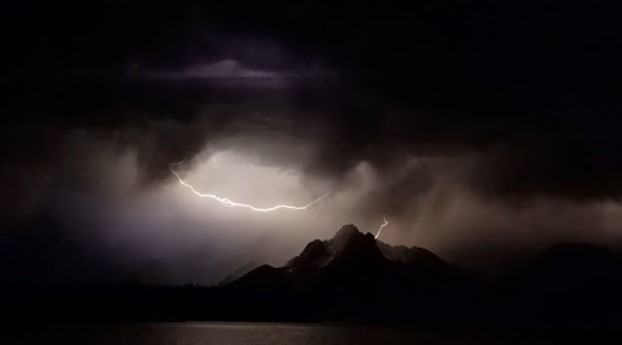
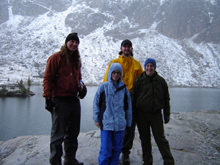
In September 2005 and 2007 it snowed on our hikers at Lake Solitude at 9,000 feet elevation and rained on those lower down in Cascade Canyon at closer to 6,800 feet elevation.
In 2007 one long evening-into-night storm had lightning as often as three hits in ten seconds with heavy rain that flooded streets in Jackson, Wyoming.
In 2010 we had many rainy or drizzly days and it did not snow on us but we did wake up to snow covered mountains near the end of the trip:
September 10, 2010 was the first big snow storm with a foot or so of snow at 9,000 feet elevation.
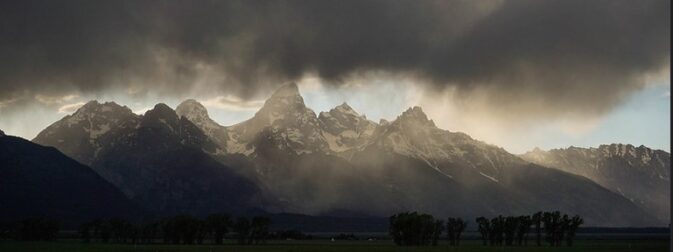
A typical late summer rain storm we experience at Colter Bay in Grand Teton National Park
might have big white puffy clouds against a very blue sky through the morning
that change in the afternoon to gray clouds going by as the wind picks up,
at first ruffling the Aspen Leaves, then later moving the pine branches
and later the smaller diameter trees start to sway
and occasionally, with more wind, the windows of your cabin start to rattle.
There might be a moment of large raindrops, then a sudden downpour.
Then heavy rain, with at first distant lightning strikes miles to the south and east, followed by closer-in lightning strikes
(one evening for example, we tracked one lightning strike at the shore of Emma Matilda Lake, one near the east of the road junction at Colter Bay and the highway, then another in the middle of the north end of Jackson Lake).
This might only last 25 minutes.
Then the storm can stop for an hour or so and resume later.
Or heavy downpours and lightning strikes can last for many hours.
An hourly weather report you are looking at might say “Intermittent clouds” for all hours, then change to “Intermittent clouds” for most hours, but add in “4pm Mostly cloudy w/ t-storms,” then the next time you look it switches to “5pm Mostly cloudy w/ t-storms,” then” 6pm Mostly cloudy w/ t-storms,” and then the thunder and lightning appears.
Some lightning strikes sound louder and closer because they reflect off the mountains.
How can you tell where the lightning strikes are that you hear the thunder from, (or might actually see a visible bolt)?
Lightning strikes in the last 24 hours are recorded at:
https://www.lightningmaps.org/blitzortung/america/index.php?lang=en
https://www.accuweather.com/en/us/national/severe-weather-maps
When watching the lightning strikes on the lightning map, storms seem strong as they come from the west to the Teton Range, with many lightning strikes, then lower in intensity. Lightning strikes frequently are on the Idaho side of the range, or in northern Yellowstone, but only rarely in the park itself. A local meteorologist told me why:
“Often thunderstorms track up the Snake River Plain in Idaho, and rise up onto the Yellowstone Plateau, in a Southwesterly flow.
A lot of these storms in that SW flow never cross the Tetons, or maybe hit the range but not the valley.”
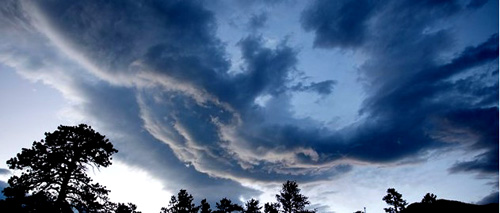
_________________________________________
ALWAYS bring your hooded waterproof rain jacket and rain pants, warm clothes for under it
and for paddling borrow a dry bag from the club advisor (warning: she might not have that many so you will need the share) as we do not always turn back when rain starts unless there is a thunderstorm, and your rain suit can help keep you warm if there is wind. Advice on gear.
You should also plan for other camera, etc. waterproofing, when out sightseeing and hiking.
(Weather could cancel kayaking as we never risk kayaking during thunderstorms.)
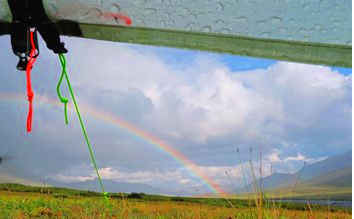
Jackson Hole weather, usually also including a 10,000 foot forecast and forecast of lightning:
https://www.mountainweather.com/jackson-hole/jackson-hole-forecast/
Yellowstone:
https://www.mountainweather.com/jackson-hole/yellowstone-park/
Yellowstone National park has a live weather display
https://www.nps.gov/features/yell/kiosk/weather.html
________________________________________________
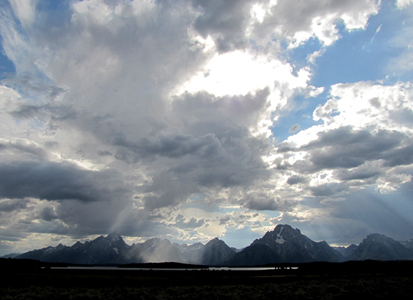
wettest months: May, June, Dec. and March
warmest (average highs): Aug, July, June, Sept, May
coldest (average highs): Jan, Dec, Feb, (in single digits) March, Nov. (in the teens)
and yet another source said that in the town of Jackson, January is the snowiest month, May the wettest; hottest recorded temp 98 (more likely a 89 to 90 degree max), coldest 63 below zero (more likely a -9 to -10 degree minimum).
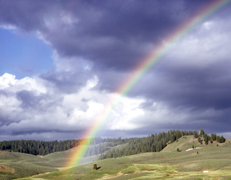
– Glacier National Park said about biking in cold / rain:
“Windbreakers or rain shells over thin insulated jackets are good layers to bring for possible inclement weather conditions.
A thin, neoprene hat will help keep your head warm, and it will fit under a helmet.
Gloves and neck gaiters assist greatly with retaining warmth.
Bring additional dry and warm layers for after your ride.”
Neoprene is a close-cell synthetic-rubber material that is commonly used in wetsuits and to make an extra thick swim cap an open-water triathlete might wear: closed-cell 3 millimeters thick. Look for a flexible chin strap or you can buy one without a chin strap.
It should fit comfortably under your bike helmet (and climbing helmet) and not interfere with the proper fit of your helmet or your peripheral vision.
There are crucial things wrong with each of these tents.
Don’t buy a cheap tent has reasons why and more examples of tents to NOT use in the rain.
Find more advice about tents and rain gear here.
What kind of clouds are those? Pictures of Cirrus, Cirrostratus, Cirrocumulus, Stratus, Altostratus, Nimbostratus, Stratocumulus, Cumulus, Altocumulus, Cumulonimbus and Lenticular clouds
are at:
https://www.nps.gov/common/uploads/teachers/lessonplans/Cloud%20Cards%2020191.pdf
SNOW IN THE SUMMER at higher elevations?
“AUGUST 24, 2013 Overnight moisture and cold temperatures brought a wintry mix to parts of the Tetons. At the Lower Saddle the 6:00 am. temperature was 36 degrees.”
July 11, 2016 there was a generous coating of snow in the high country. The Jenny Lake climbing rangers blog said:
“JULY SNOW STORM! – JULY 10-11,2016
4” of new snow reported at the Lower Saddle along with 50-70mph gusts. The fixed lines and watering hole were encased in ice – similar to current conditions up high in the mountains. Expect “alpine” conditions for the next number of days, particularly in the east to north to west facing terrain as well as the sheltered terrain and ledges of the southerly terrain.”
And the Jenny Lake climbing rangers blog had this warning June 10, 2016:
“Generally, there is snow in the high country till mid July. This includes the Teton Crest Trail. Until the beginning of July this snow may be punchy, except very early in the morning and during the night. This type of hiking (post-holing) is type II character building. It is not fun in the traditional sense.”
You may be up for the challenge,
but sincerely ask yourself if everyone in your party feels the same way.
North and East facing passes can hold snow even longer.
Until enough intrepid backpackers have created a trail of hard packed snow, strong navigation skills are a necessity.”
Wind storms can be severe, even in the summer. A June 1, 2015 trees downed by a wind storm stranded visitors on many roads. Park Rangers, road and fire crews cleared over 150 trees. Microbursts of wind at 52 and 56 mph were recorded.
Again, from the the Jenny Lake climbing rangers blog
“FLASH FLOOD IN PAINTBRUSH CANYON – August 14, 2014
Yesterday afternoon a flash flood occurred in Paintbrush Canyon affecting four different sections of trail in the vicinity of the switch backs leading out of the Lower Paintbrush camping zone. Be prepared for walking on uneven surfaces, multiple creek crossings and debris that may have not yet stabilized. Extremely heavy rain preceded the event. Considering the large amount of heavy rain the Tetons have recently received, there is increased risk of rock fall everywhere and the chance of additional flash flooding if these conditions persist. As is commonly said in the avalanche world, uncommon conditions create uncommon events. In the event of heavy rain, head to high ground and avoid creek bottoms.”
Winter lasts about six or seven months in the Grand Teton, Jackson Hole area. One source had the snowiest months: Jan, Dec, Feb, Nov, March. Another source said: The most snow, in this order: February, March, January, December, April, November. Grand Teton park says that “the first heavy snows fall by November 1 and continue through March; snow and frost are possible during any month.”
One blogger described ‘nine months of winter and three months of bad skiing.’
Watch a Winter Safety in Grand Teton video:
http://www.nps.gov/grte/photosmultimedia/tp.htm
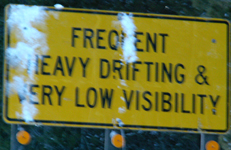
 Snow generally covers roads from early November through mid-April. Blowing snow is frequent in the winter, even to the extent that you can’t see very far in front of your vehicle. Cloud cover can prevent you from seeing the mountains for days at a time, even within a few miles of the range.
Snow generally covers roads from early November through mid-April. Blowing snow is frequent in the winter, even to the extent that you can’t see very far in front of your vehicle. Cloud cover can prevent you from seeing the mountains for days at a time, even within a few miles of the range.
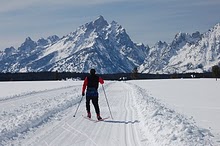 The inner park road is closed from just beyond the Taggart Lake parking lot all the way to Signal Mountain (and not plowed) from November 1 over the winter until sometime around May 1. Once snow accumulates the road is used for cross-country skiing, skate skiing and snow-shoeing.
The inner park road is closed from just beyond the Taggart Lake parking lot all the way to Signal Mountain (and not plowed) from November 1 over the winter until sometime around May 1. Once snow accumulates the road is used for cross-country skiing, skate skiing and snow-shoeing.
Grand Teton park recommends vehicles with four-wheel drive or all weather tires and warns that all roads can be closed during blizzards. “Winter driving can be challenging; park roads are often covered with ice or hard packed snow; winter storms can create white-out driving conditions.”
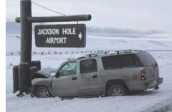
Bison and other animals use the plowed highways to move more easily than in the deep snow, and motorists need to drive slowly. https://www.nps.gov/grte/learn/news/bison-on-roads-motorists-warned-to-be-alert-and-slow-down.htm
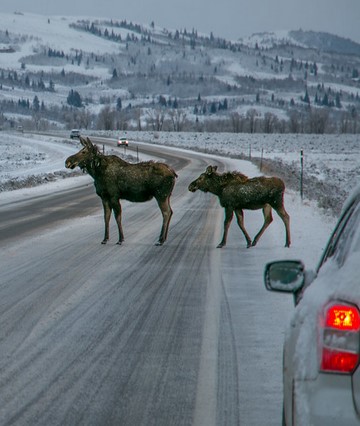
________________________________________________
________________________________________________
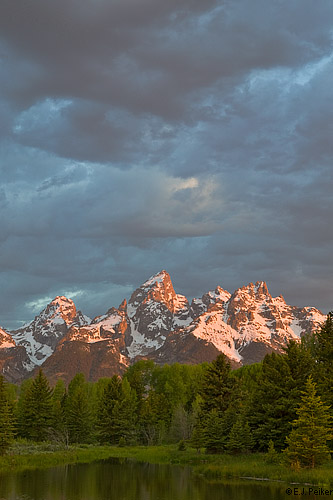
photo above © E J Peiker http://www.ejphoto.com/grand_teton_page.htm used with permission
The National Park service has these weather factoids:
“Crickets are accurate thermometers; they chirp faster when warm and slower when cold. They are extremely accurate. Count their chirps faster for fourteen seconds, then add forty, and you have the temperature (in Fahrenheit) of wherever the cricket is.”
“Human hair, especially blond hair, has a tendency expand in length as the humidity rises. This may cause naturally-curly hair to droop. Or it may cause straight hair to curl up a little. The higher the humidity, the more likely it is to rain.”
________________________________________________
For details about our next club trip to Grand Teton National Park, go to: Grand Tetons.
Grand Tetons trip pages index has brief descriptions of most of the pages about this trip.
Your Safety in Grizzly Bear Territory tells you what to do if you see a bear in the distance or a bear charges you and has info about Bear Pepper Sprays and what might happen before a bison charges.
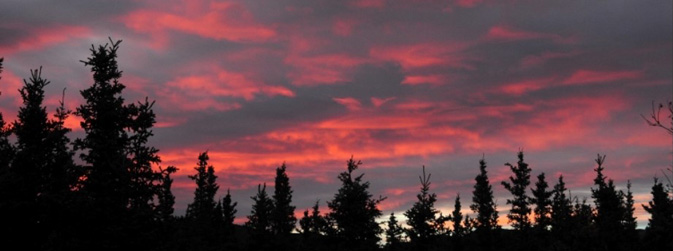
Backpacking Advice includes:
Must bring for each large group (or perhaps for each couple or person)
Must bring backpacking for each person
Some (crazy?) people think these are optional for backpacking:
Backpacking luxuries(?)
Do not bring these backpacking
To keep down on weight backpacking
Don’t rush out and buy
BACKBACKING FOOD
Low-cook backpacking foods
Leave no trace camping has these basic principles:
Plan Ahead and Prepare
Travel and Camp on Durable Surfaces
Dispose of Waste Properly
Minimize Campfire Impacts
Respect Wildlife
Be Considerate of Other Visitors
examples and details of how easy this can be are at: Leave no trace

The author of this webpage, (written for my students), does not give any warranty, expressed or implied, nor assume any legal liability or responsibility for the accuracy, completeness, or usefulness of any information, product, or process included in this website or at websites linked to or from it. Users of information from this website assume all liability arising from such use.
